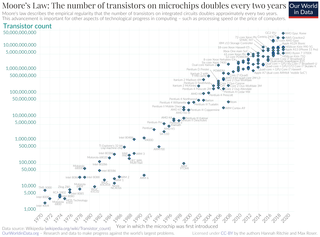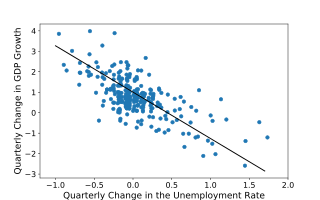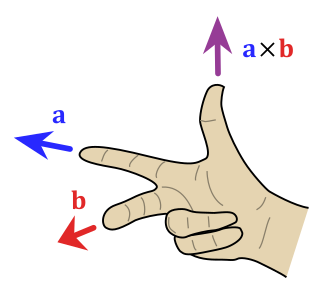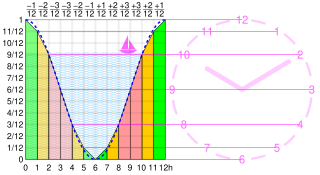 W
WIn air navigation, the 1 in 60 rule is a rule of thumb which states that if a pilot has travelled sixty miles then an error in track of one mile is approximately a 1° error in heading, and proportionately more for larger errors. The rule is used by single pilots with many other tasks to perform, often in a basic aircraft without the aid of an autopilot, who need a simple process that can be performed in their heads. This rule is also used by air traffic controllers to quickly determine how much to turn an aircraft for separation purposes.
 W
WIn Internet culture, the 1% rule is a rule of thumb pertaining to participation in an internet community, stating that only 1% of the users of a website add content, while the other 99% of the participants only lurk. Variants include the 1–9–90 rule, which states that in a collaborative website such as a wiki, 90% of the participants of a community only consume content, 9% of the participants change or update content, and 1% of the participants add content.
 W
WIn statistics, the 68–95–99.7 rule, also known as the empirical rule, is a shorthand used to remember the percentage of values that lie within an interval estimate in a normal distribution: 68%, 95%, and 99.7% of the values lie within one, two, and three standard deviations of the mean, respectively.
 W
WThe diagonal method (DM) is a rule of thumb in photography, painting and drawing. Dutch photographer and lecturer Edwin Westhoff discovered the method when, after having long taught the rule of thirds in photography courses, he conducted visual experiments to investigate why this rule of thirds only loosely prescribes that points of interest should be placed more or less near the intersection of lines, rather than being rigid and demanding placement to be precisely on these intersections. Having studied many photographs, paintings and etchings, he discovered that details of interest were often placed precisely on the diagonals of a square, instead of any "strong points" that the rule of thirds or the photographic adaptation of the golden ratio suggests. A photograph is usually a rectangular shape with a ratio of 4:3 or 3:2, from which the diagonals of the photograph are placed at the bisection of each corner. Manually placing certain elements of interest on these lines results in a more pleasing photograph.
 W
WThe five-second rule, sometimes extended to the ten-second rule, is a food hygiene myth that states a defined time window where it is safe to pick up food after it has been dropped and thus exposed to contamination.
 W
WHaitz's law is an observation and forecast about the steady improvement, over many years, of light-emitting diodes (LEDs).
Haldane's rule is an observation about the early stage of speciation, formulated in 1922 by the British evolutionary biologist J.B.S. Haldane, that states that if in a species hybrid only one sex is inviable or sterile, that sex is more likely to be the heterogametic sex. The heterogametic sex is the one with two different sex chromosomes; in therian mammals, for example, this is the male.
 W
WHuang's law is an observation in computer science and engineering that advancements in graphics processing units (GPU) are growing at a rate much faster than with traditional central processing units (CPU). The observation is in contrast to Moore's law that predicted the number of transistors in a dense integrated circuit (IC) doubles about every two years. Huang's law states that the performance of GPUs will more than double every two years. The hypothesis is subject to questions about its validity.
 W
WIn photography, filmography and other visual arts, lead room, or sometimes nose room, is the space in front, and in the direction of, moving or stationary subjects. Well-composed shots leave space in the direction the subject is facing or moving. When the human eye scans a photograph for the first time it will expect to see a bit in front of the subject.
 W
WLipinski's rule of five, also known as Pfizer's rule of five or simply the rule of five (RO5), is a rule of thumb to evaluate druglikeness or determine if a chemical compound with a certain pharmacological or biological activity has chemical properties and physical properties that would make it a likely orally active drug in humans. The rule was formulated by Christopher A. Lipinski in 1997, based on the observation that most orally administered drugs are relatively small and moderately lipophilic molecules.
 W
WIn lunar photography, the Looney 11 rule is a method of estimating correct exposures without a light meter. For daylight photography, there is a similar rule called the Sunny 16 rule. The basic rule is: "For astronomical photos of the Moon's surface, set aperture to f/11 and shutter speed to the [reciprocal of the] ISO film speed [or ISO setting]."With ISO 100, the photographer should set the shutter speed to 1/100 or 1/125 second. With ISO 200, set it to 1/200 or 1/250 second. With ISO 400, set it to 1/400 or 1/500 second.
 W
WMoore's law is the observation that the number of transistors in a dense integrated circuit (IC) doubles about every two years. Moore's law is an observation and projection of a historical trend. Rather than a law of physics, it is an empirical relationship linked to gains from experience in production.
 W
WNaismith's rule helps with the planning of a walking or hiking expedition by calculating how long it will take to travel the intended route, including any extra time taken when walking uphill. This rule of thumb was devised by William W. Naismith, a Scottish mountaineer, in 1892. A modern version can be formulated as follows:Allow one hour for every 3 miles (5 km) forward, plus an additional hour for every 2,000 feet (600 m) of ascent.
 W
WThe octet rule is a chemical rule of thumb that reflects the theory that main-group elements tend to bond in such a way that each atom has eight electrons in its valence shell, giving it the same electronic configuration as a noble gas. The rule is especially applicable to carbon, nitrogen, oxygen, and the halogens, but also to metals such as sodium or magnesium. Other rules exist for other elements, such as the duplet rule for hydrogen and helium, or the 18-electron rule for transition metals.
 W
WIn economics, Okun's law is an empirically observed relationship between unemployment and losses in a country's production. It is named after Arthur Melvin Okun, who first proposed the relationship in 1962. The "gap version" states that for every 1% increase in the unemployment rate, a country's GDP will be roughly an additional 2% lower than its potential GDP. The "difference version" describes the relationship between quarterly changes in unemployment and quarterly changes in real GDP. The stability and usefulness of the law has been disputed.
 W
WThe Pareto principle states that for many outcomes, roughly 80% of consequences come from 20% of causes. Other names for this principle are the 80/20 rule, the law of the vital few, or the principle of factor sparsity.
 W
WThe pie rule, sometimes referred to as the swap rule, is a rule used to balance abstract strategy games where a first-move advantage has been demonstrated. After the first move is made in a game that uses the pie rule, the second player must select one of two options:Letting the move stand. The second player remains the second player and moves immediately. Switching places. The second player becomes the first-moving player, and the "new" second player then makes their "first" move.
 W
WIn mathematics and physics, the right-hand rule is a common mnemonic for understanding orientation of axes in three-dimensional space.
 W
WThe rule of thirds is a "rule of thumb" for composing visual images such as designs, films, paintings, and photographs. The guideline proposes that an image should be imagined as divided into nine equal parts by two equally spaced horizontal lines and two equally spaced vertical lines, and that important compositional elements should be placed along these lines or their intersections. Proponents of the technique claim that aligning a subject with these points creates more tension, energy and interest in the composition than simply centering the subject.
 W
WThe rule of twelfths is an approximation to a sine curve. It can be used as a rule of thumb for estimating a changing quantity where both the quantity and the steps are easily divisible by 12. Typical uses are predicting the height of the tide or the change in day length over the seasons.
 W
WA histogram is an approximate representation of the distribution of numerical data. It was first introduced by Karl Pearson. To construct a histogram, the first step is to "bin" the range of values—that is, divide the entire range of values into a series of intervals—and then count how many values fall into each interval. The bins are usually specified as consecutive, non-overlapping intervals of a variable. The bins (intervals) must be adjacent and are often of equal size.
 W
WSwanson's law is the observation that the price of solar photovoltaic modules tends to drop 20 percent for every doubling of cumulative shipped volume. At present rates, costs go down 75% about every 10 years.
 W
WThe two-second rule is a rule of thumb by which a driver may maintain a safe trailing distance at any speed. The rule is that a driver should ideally stay at least two seconds behind any vehicle that is directly in front of his or her vehicle. It is intended for automobiles, although its general principle applies to other types of vehicles. Some areas recommend a three-second rule instead of a two-second rule to give an additional buffer.